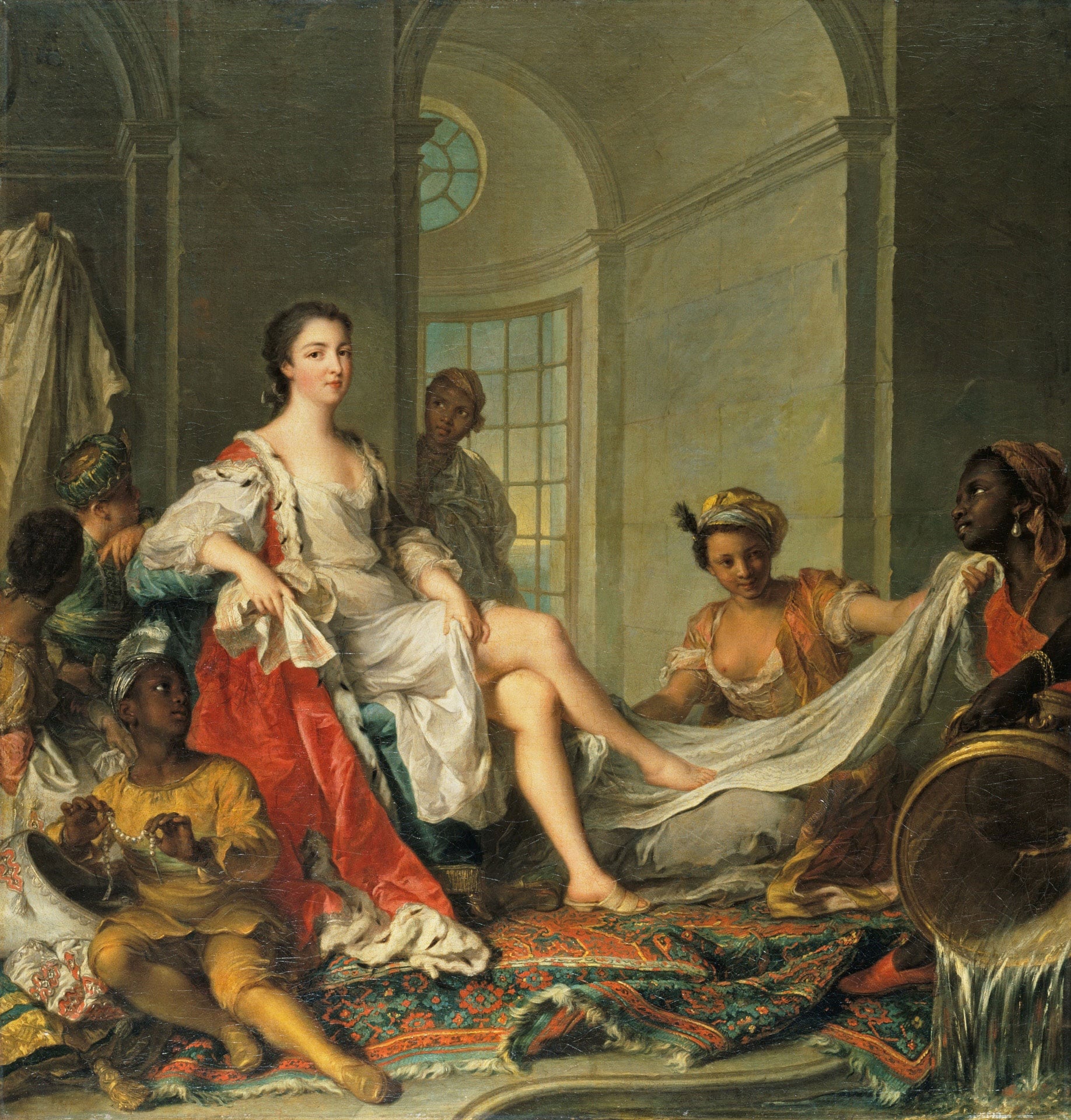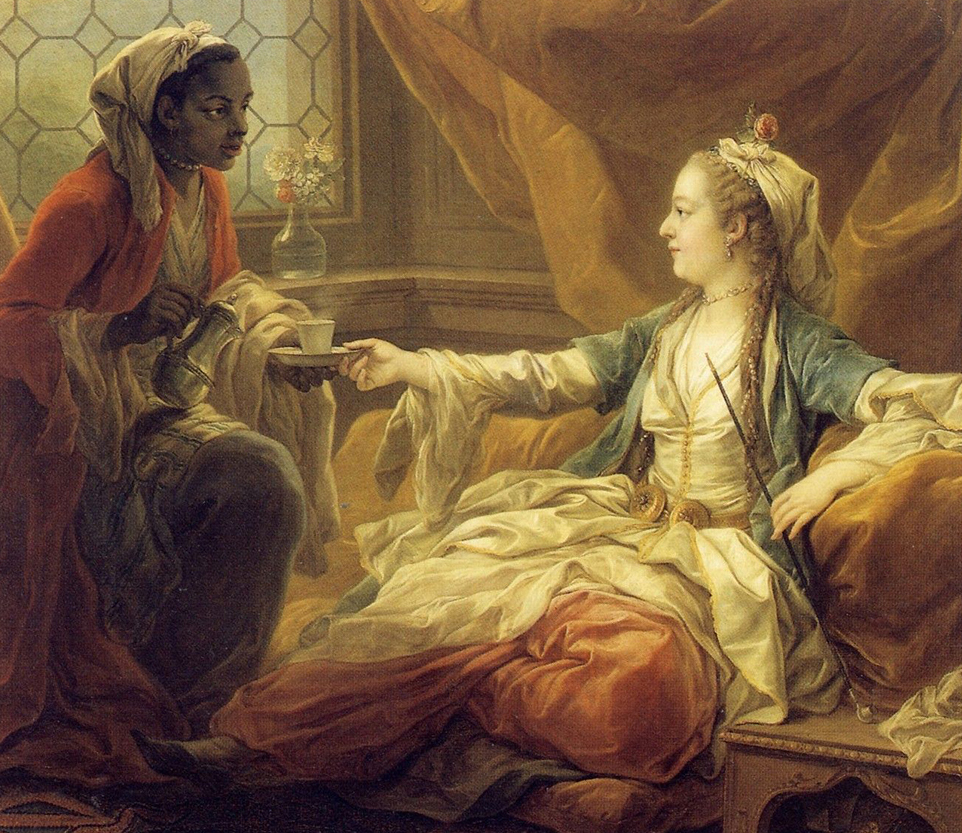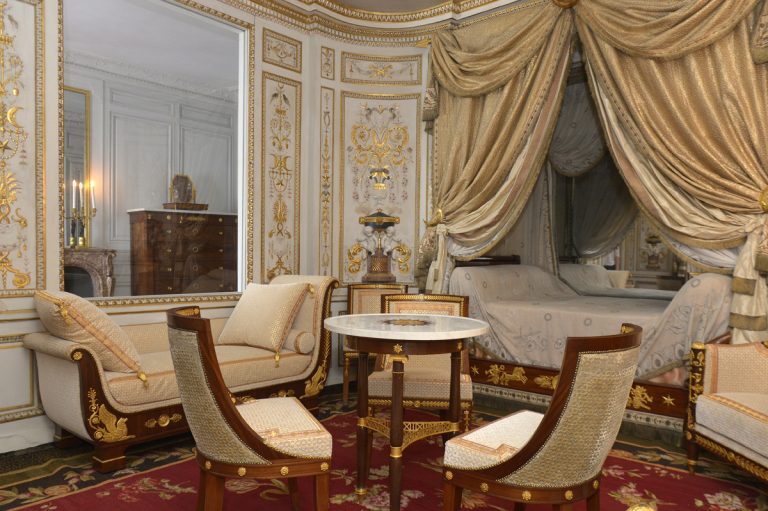The allure of the Ottoman Empire had already taken hold of the European courts during the 17th century and would continue on-and-off until the fall of Versailles. By the reign of Louis XVI, it was at its height. At court, the exotic style was called "turquerie" - and it influenced everything from fashion to interior design.
 |
| Mademoiselle de Clermont, 1723 |
The French court's interest was already piqued in 1669 when Sultan Süleyman Agha Müteferrika's envoy arrived in Paris. Although the visit was hardly a diplomatic success - the French refused to acknowledge the Turks as proper ambassadors and the Turks were unwilling to show the demanded adoration of the king - but the fascination with the Ottoman Empire caught hold. Besides several instances of portraits à la Turque, the envoys also brought popular trends to court: coffee and tobacco.
The Ottomans had long been a inspiration for the creatives mind at court - although not always positively. Molière's "Le Bourgeois Gentilhomme" had clear Oriental inspirations, Racine's "Bajazet" of 1672 took place within a harem while Mozart's L'Enlèvement au sérail" dealt with a couple of Westerners sold to "Pacha Selim"; later Salieri's "Tarare" took Paris by storm. Unsurprisingly, many of the plays, books or operas which included Ottomans often depicted them in a negative (on occasion even rather racist) manner. The contemporary Western society viewed the Ottoman Empire with a mixture of fascination, contempt and fear. The incredible luxury of the sultan's court, the exotic finery and goods imported from his lands and the foreign customs all intrigued the courtiers. Yet, it had not been long since the sultan's armies had massed outside of Vienna and his military prowess remained a constant threat. Finally, there were certain stereotypes which seem to have had a firm hold on the Western courts. Many considered the Turks to be more wildly passionate, less scrupulous and prone to deceit - such prejudices were bound to spill into popular culture such as operas.
 |
| Reconstruction of the Comte d'Artois' boudoir |
Madame de Pompadour - who is otherwise best known for her delicate rococo style - appears to have indulged in the fashion for "turquerie". Besides owning several pairs of so-called harem-trousers, she also had herself painted as a sultana. Furthermore, Madame de Pompadour ordered several paintings with Turkish motifs for her apartments at the Château de Bellevue.
Such portraits usually entailed turbans and kaftans for the strikingly pale gentlemen and layers upon layers of various colourful fabrics loosely draped for the ladies. The fashion thus contracted sharply with the tightly laced bodices of the gentlewomen at court - and also illustrates the common belief that Turks were more free in their bedroom manners.
 |
| Daughter of the Earl of Carlisle |
The fascination with the seemingly unending riches of the Orient also provided inspiration for the merchant providers to the court. Of these, the most infamous was Rose Bertin whose couture-shop "Le Grand Mogol" pandered to the rich and powerful while exotic silks could be bought at the similarly titled "Au Grand Turc". The dresses à la Turque were as colourful as could possibly be and often included a loosely draped belt in a contrasting colour. One of the main selling points was how comfortable these more loose-fitting gowns were compared to the rigid robes à la Française with their unbending whalebone corsets. In total, three different types of gowns were introduced as a by-product of the mania for turquerie: robe à la Turque, robe à la Sultana and robe à la Levantine. All were loose-fitting, all were colourful - and all were popular.
 |
| Lady wearing a robe à la Levantine, 1775 |
At masked balls, it became fashionable to wear dresses à la Turque and others emulated Madame de Pompadour's Turkish inspired portraits. Interestingly, the celebrated drawing by Cochin of the Ball of the Yew Trees (the masked ball celebrating the dauphin's marriage in 1745) clearly show two guests dressed as Ottomans. Courtiers would attempt to make their costumes as accurate as possible; luckily for those without first-hand experience of the Near East, books were at hand to help out. A courtier preparing for a ball might consult the Recueil Ferriol by the Comte de Ferriol which depicted no less than 100 different outfits worn by different social classes.
 |
| Madame de Pompadour as a Sultana by Charles- André van Loo |
By the mid-1750's and onwards, the siege of Vienna was long forgotten by the French courtiers and the fashion with everything à la Turque tended to focus more on fashion and interior design than politically charged plays.
During the 1770's and 1780's it became fashionable to decorate entire rooms in the "Turkish style". The Comte d'Artois was one who was very taken with the style. He had boudoirs installed in 1774-75 at Versailles itself, no less than three ensuite rooms in the south wing. Today, the designs chosen for such rooms would probably be seen as stereotypes. Of the surviving wall panels images such as crescent moons, men in turbans and harems were the focal points.
Marie Antoinette herself followed the footsteps of her brother-in-law and had a Turkish boudoir installed at Fontainebleau in 1777 (it was restored in its entirety in 2015). She purchased several plaques with "Turkish" motifs from 1774 until 1782; even Louis XVI bought some as late as 1787. It says something of the popularity of having a boudoir in this particular style that the otherwise sombre Madame Élisabeth also had one installed in her own estate.
 |
| The restored boudoir de Turc at Fontainebleau - it now stands as Marie Antoinette designed it |
Surprisingly, especially considering the extravagance involved, the taste for turqurie survived the turmoil of the revolution.

No comments:
Post a Comment